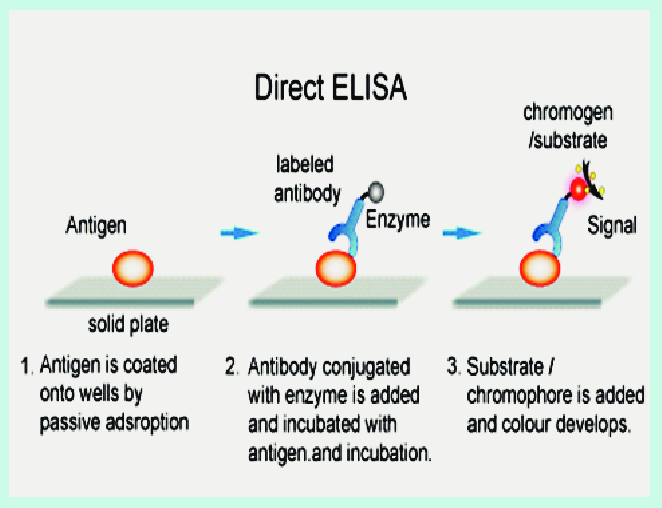The Enzyme-Linked Immunosorbent Assay (ELISA) is a powerful and widely used technique in laboratories worldwide. It plays a crucial role in detecting and quantifying biological substances such as proteins, peptides, antibodies, and hormones. The importance of ELISA in diagnostics, research, and quality control cannot be overstated, making it essential for beginners to grasp its fundamental concepts and applications.
Types of ELISA
ELISA comes in four main types, each serving unique purposes and offering specific advantages:
- Direct ELISA:
- In direct ELISA, the antigen is directly immobilized on the assay plate.
- A labeled antibody, which directly binds to the antigen, is used for detection.
- This method is simple and fast but may have lower sensitivity due to a single antibody binding event.

- Indirect ELISA:
- Here, the antigen is also immobilized on the plate.
- A primary antibody binds to the antigen, followed by a labeled secondary antibody that binds to the primary antibody.
- Indirect ELISA is more sensitive than direct ELISA due to signal amplification from multiple secondary antibodies binding to each primary antibody.

- Sandwich ELISA:
- This method requires two antibodies: a capture antibody and a detection antibody.
- The capture antibody is immobilized on the plate, and the antigen from the sample is "sandwiched" between the capture and detection antibodies.
- Sandwich ELISA offers high specificity and sensitivity, making it suitable for complex samples.
- Competitive ELISA:
- In competitive ELISA, the sample antigen competes with a labeled antigen for binding to a limited amount of capture antibody.
- The signal is inversely proportional to the amount of antigen in the sample.
- This method is ideal for detecting small molecules and is commonly used in drug testing.
Basic Steps of an ELISA
Performing an ELISA involves several key steps, which, although straightforward, require careful attention to detail to ensure accurate results:
- Coating:
- The wells of a microplate are coated with the capture antibody (or antigen, in the case of direct ELISA) and incubated to allow binding.
- Blocking:
- After coating, the wells are blocked with a protein solution to prevent non-specific binding of antibodies to the plate surface.
- Sample Addition:
- Samples containing the antigen (or antibody) of interest are added to the wells and incubated to allow binding to the capture antibody.
- Detection:
- For indirect and sandwich ELISAs, the primary antibody is added and incubated.
- The secondary antibody, which is conjugated with an enzyme, is then added and incubated.
- Substrate Addition:
- A substrate specific to the enzyme conjugated to the secondary antibody is added.
- The enzyme catalyzes a reaction that produces a detectable signal, usually a color change.
- Signal Measurement:
- The intensity of the signal, often measured using a spectrophotometer, correlates with the amount of antigen (or antibody) in the sample.
USING ELISA TO MEASURE CONCENTRATIONS OF SEX HORMONES OVER MENSTRUAL CYCLE IN FEMALES AND OVER LIFESPAN IN MALES.
Understanding the basics of ELISA is essential for anyone working in the fields of immunology, biochemistry, or molecular biology. Its versatility and sensitivity make it a cornerstone of many laboratory protocols. By grasping the different types of ELISA and their specific applications, as well as mastering the basic steps involved, beginners can confidently use this technique to achieve accurate and reproducible results.